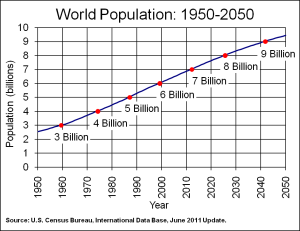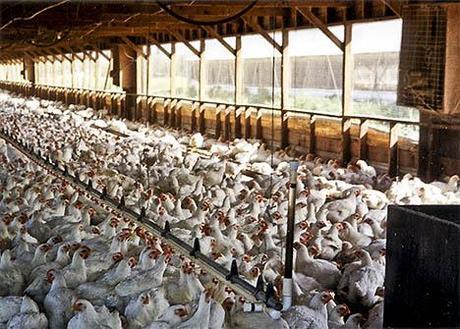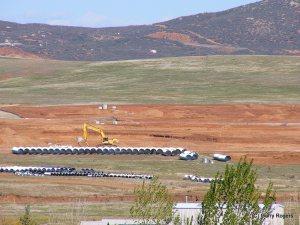Feeding 3 Billion More People
 The U. S. Census Bureau uses world data to estimate that in 2150, Earth’s human population will reach 9 billion and stay around that number for the next few centuries. But must we stop? Can’t we go on to 12 billion? In an article published in America’s leading academic journal, Science, a group of scientists led by Paul C. West say yes. Here is the full abstract of their article:
The U. S. Census Bureau uses world data to estimate that in 2150, Earth’s human population will reach 9 billion and stay around that number for the next few centuries. But must we stop? Can’t we go on to 12 billion? In an article published in America’s leading academic journal, Science, a group of scientists led by Paul C. West say yes. Here is the full abstract of their article:
“Achieving sustainable global food security is one of humanity’s contemporary challenges. Here we present an analysis identifying key “global leverage points” that offer the best opportunities to improve both global food security and environmental sustainability. We find that a relatively small set of places and actions could provide enough new calories to meet the basic needs for more than 3 billion people, address many environmental impacts with global consequences, and focus food waste reduction on the commodities with the greatest impact on food security. These leverage points in the global food system can help guide how nongovernmental organizations, foundations, governments, citizens’ groups, and businesses prioritize actions” (Paul C. West, et al, Science 345: 325-328).
The editors of Science had this to say: “Keeping societies stable and managing Earth’s resources sustainably depend on doing a good, steady job producing and distributing food. West et al. asked what combinations of crops and regions offer the best chance of progress. Their analysis focused on reducing greenhouse gas emissions, nutrient pollution, water use, and food waste. They identify regions that are likely to yield the best balance between applying fertilizer to increase crop yields versus the resulting environmental impact” (editor, Science 345: 325).


New Housing With Uncertain Water Supplies
Despite the uncertainties, the effort of Paul C. West his coauthors should encourage renewed efforts by developers who might have felt a tingle of concern that growth and profits could slow. Their new slogan might become: “Don’t say slow, science says grow.” ;-).

